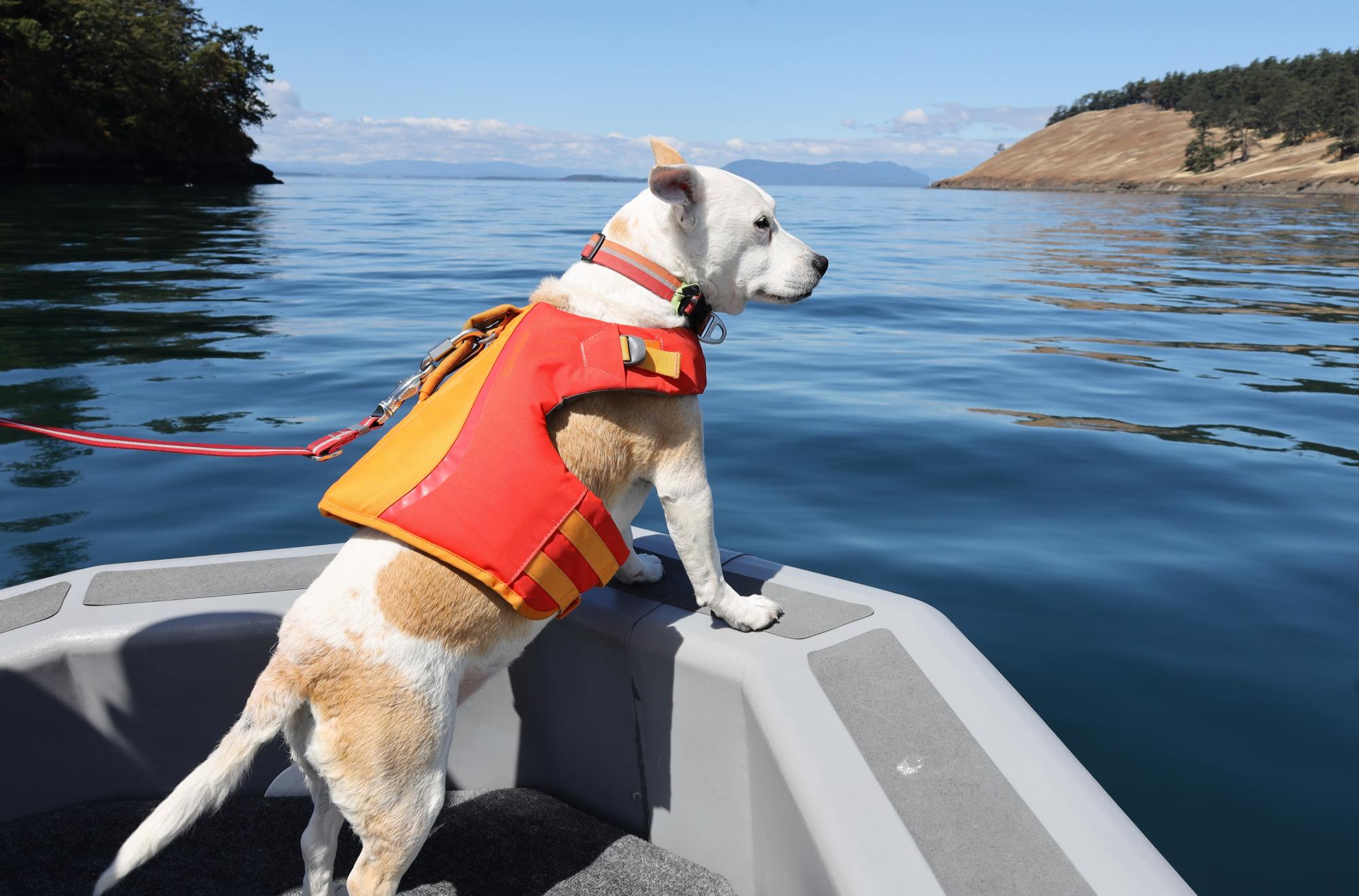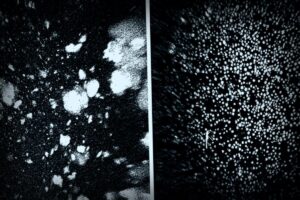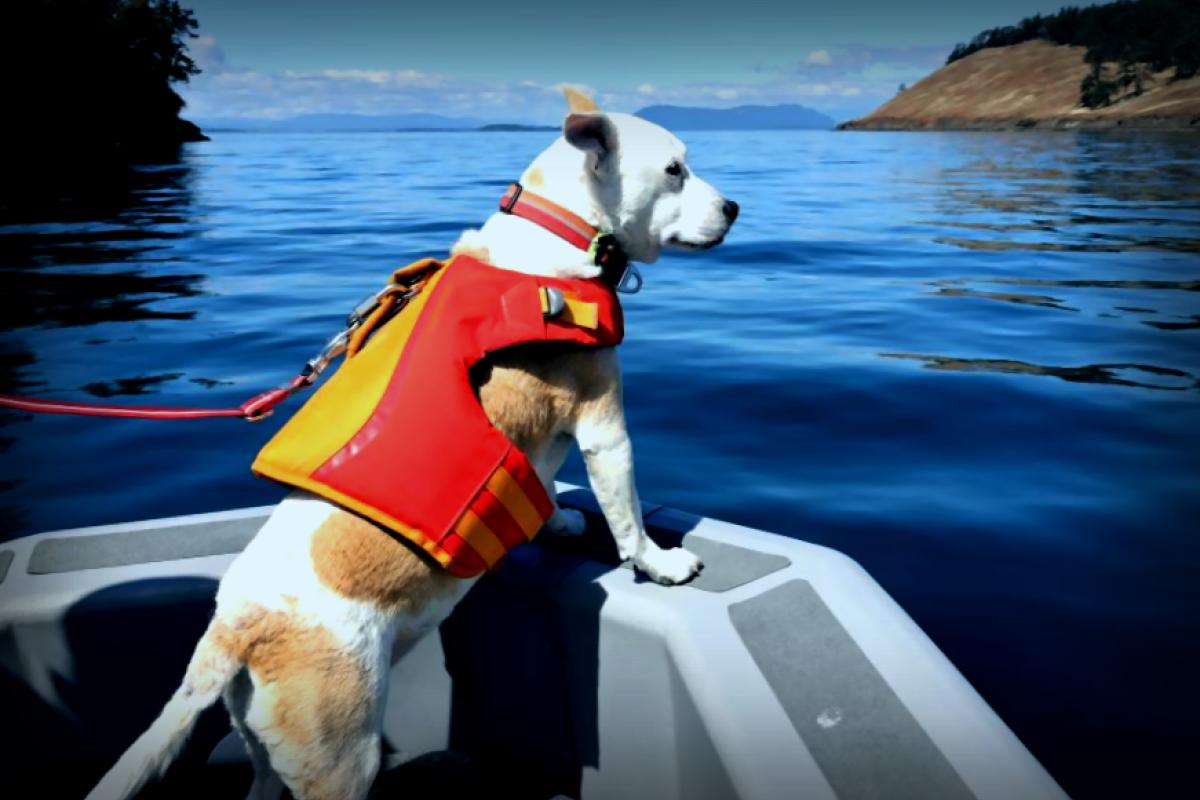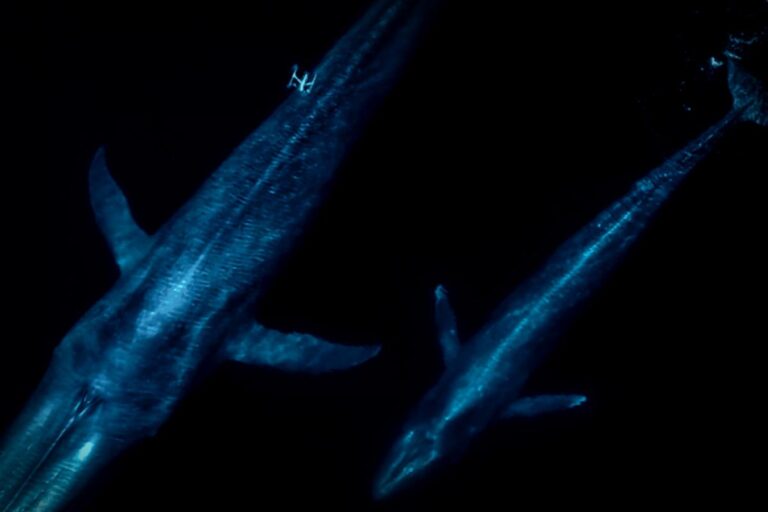
The San Juan Islands, sitting between the sunny shores of Washington and the picturesque Vancouver Island, are a bustling hotspot for North American wildlife. Here, the critically endangered southern resident killer whales thrive above the surging waters of the Salish Sea.
Dr. Deborah Giles, a dedicated scientist in orca research, often finds herself at sea with her dynamic sidekick, Eba. This adorable brown and white rescue dog, with her incredible sense of smell, was discovered as a tiny, shivering puppy abandoned on the streets of Sacramento and has been helping detect orca scent since she was just four years old.
Sporting a brightly colored life jacket – and sometimes even goggles – Eba is always primed atop the research boat, sniffing the breeze for the scent of whale scat. When she catches a hint of it, her excitement shows; she perks up, wagging her tail or whimpering, guiding Dr. Giles in the right direction. This clever canine approach has become an unexpected but vital tool in efforts to save these majestic whales.
“We wanted to involve Eba in our research to keep a safe distance from the whales, ensuring their comfort while we learn about them,” Dr. Giles explains, representing the marine conservation group SeaDoc Society.
Studying orca scat may sound odd, but researchers glean tons of vital information from each sample. They can investigate the whales’ diets, hormone levels, toxin exposure, pregnancy status, gut health, and even check for the presence of microplastics and parasites.
“The orcas are part of a bigger ecosystem, connecting us all as one tribe with all living beings,” says Steve Edwards, from the Swinomish tribe.
On Eba’s collar, there’s a piece of unique lime green and black neoprene that was once part of a toy owned by Tokitae, an orca considered part of the southern resident population. Captured in a mass capture in 1970, she spent over five decades in captivity before her passing in 2023, a reminder of how crucial and personal the orca’s fate is, especially to those who advocate for their return to natural habitats.
After Eba picks up a scent, Dr. Giles expertly gathers the floating scat and conducts tests in a wet lab on the boat’s rear. A centrifuge works to separate the whale droppings from seawater before sending samples off for detailed lab testing.
This research has revealed troubling information about the modern struggles facing southern resident orcas — once abundant, they remain the smallest orca ecotype in the Pacific. Nowadays, dangerous drops in their main food supply, the Chinook salmon, compounded by rising pollution and intrusive boat noises, have left them at dire risk of extinction.
Unlike their larger cousins, the Bigg’s killer whales, and the northern residents, which continue to thrive, the southern residents are very much at risk. With their unique culture and diet primarily focused on fish, it’s disheartening to note that their population has plummeted by nearly 20% since the late ’90s.
This crisis hits hard for those who admire these whales. The presence of orcas isn’t merely a spectacle; local culture including commerce and spirituality intertwines with these creatures. For many Indigenous communities, including the Swinomish tribe, the day-to-day lives reflect a kinship with the whales.
“Orcas, or blackfish as we call them, tie us as a tribe back to everything alive,” shares Steve Edwards of the Swinomish Tribe.
Even state representatives like Alex Ramel echo these sentiments, noting the orcas alive or washing up on shores make headlines and discussions throughout the community.
Notably, in January, a heartbreaking moment unfolded when a mother was spotted grief-stricken, carrying her deceased newborn. It marked her second loss since 2018 when she was infamous for pushing her dead calf for a staggering 1,000 miles. Recently, another southern resident also made headlines for carrying her deceased calf along with the umbilical cord still attached.
For seasoned researcher Dr. Giles, these incidents reflect severe, underlying environmental issues. “They symbolize what’s broken in our ecosystem,” she shares, emphasizing, “We are the reasons for their decline — we must take action for their recovery.”
In the past, monitoring orcas relied on more invasive methods such as shooting dart tags and biopsy tools into their dorsal fins, techniques now deemed hazardous. Tragically, a 2016 tagging effort concluded with a whale’s passing just weeks later due to an infection.
Even capturing their breath can be dist unsettling – as Dr. Giles pointed out, merely being 30 feet away in a boat can induce significant stress responses.
Fortunately, innovative tools like scent-detection dogs collaborate with new tech, allowing for less intrusive conservation practices.
On board with Dr. Giles is James Sheppard, a researcher at the San Diego Zoo Wildlife Alliance, along with volunteer Charlie Welch, working on cutting-edge conservation drones designed to safely capture breath samples from the orcas’ spouts with petri dishes.
“We gather vital glimpses into the whales’ health,” James points out.
He elaborates, “Securing rapid and solid data is crucial for understanding pressing issues. Once identified, animal caretakers are ready to jump in if needed.”
Soon after, a pod of Bigg’s killer whales graces the waters. Picking their moment, the drone team flies the aerial capture system which adeptly hovers silently overhead.
When a whale surfaces, the smart drone’s petri dishes successfully grab mist from its blowholes measuring invaluable biological details. This gives a near instant picture of what’s happening inside them.
The innovative drone operations boast an impeccable safety record and adhere to strict regulations designed to minimize disruption. Often, the whales continue life virtually unbothered, treating the drones like a non-issue as they swim along.
“Our computations are delicate; while flying 100 meters up, you have to adjust to within a meter of the winds above,” Charlie says. “Timing is everything, it can all happen in a matter of seconds.”
Despite all these challenges in their precise flying, the duo remains dedicated to their mission. “Our work needs tangible outcomes that directly impact the creatures we study,” asserts James adamantly. “Without this, we are simply collecting data without purpose.”
“We must lobby for real change. Science grants us that backing,” he concludes passionately.




















